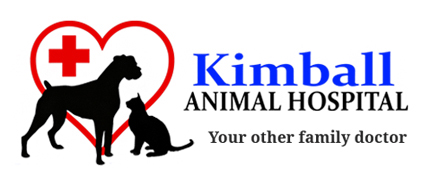February is the “official” Veterinary Dental Health Month. However, dental health and hygiene is important enough that we should talk about it all year round, and we almost always do at every physical examination. That’s because more than 80% percent of pets that are 3 years of age or older have periodontal disease.
Periodontal disease is an infection of the gums, and even bone surrounding the teeth. The cause? Bacteria that almost immediately starts growing on the teeth after eating, fed by food particles. Mixing with saliva, this forms a film called plaque. It’s that fuzzy teeth feeling you have in the morning before you brush your teeth.
So if plaque has already formed in the approximately 8 hours you’re asleep (assuming you brush your teeth before bed AND have not eaten anything afterwards), imagine how much accumulates on your pet’s teeth with NO dental hygiene whatsoever. Afterwards, the body sends white blood cells to attack the invading bacteria; but as the bacteria are killed, the gum tissue is also broken down. This leads to inflamed gums, damaged dental tissue, bone weakening, and eventually- tooth loss.
While we do care about the teeth, that bacteria in the mouth can also spread to other areas of the body. Being swallowed may cause stomach upset. Going through the bloodstream it can irritate and damage the liver ,the kidneys, or even the heart. Bacteria growing on heart valves makes them clunky and chunky, not fitting together properly. Some blood then leaks backwards, making it harder to pump; so the heart has to work out more. The heart is muscular tissue, and when you work out muscle, it responds by getting bigger. This then pulls the heart valves apart more, worsening the problem, and causing the vicious circle of heart failure. That’s why dental hygiene at home is very important for your pet.
Some people may question why they’ve had pets that never seemed to need dental care. I would say, that it is possible, and that those individuals just have, as I call them, “lucky mouths”. I have definitely seen 15 year old patients that have pearly white teeth. However, I have also seen patients that eat hard kibble and chew treats and (safe) bones, and still need dental cleanings. So any form of additional dental hygiene can be helpful.
Years ago, there was a product called OraVet. It was a gel that we would apply after a teeth cleaning at the hospital. Then owners would take a cotton swab looking applicator and rub it along the gums, spreading it along the tooth surfaces with a finger, once weekly. It was a “plaque prevention” technique, because the gel would create a repelling bond on the teeth and prevent bacteria from adhering and starting the plaque cycle.
Nobody used it.
Recently, they re-released OraVet as a chewable treat. The same plaque prevention possibility, and all your dog (sorry… no cat treats yet. But would your cat actually eat it?) has to do is chew one treat daily. Once being chewed, they have the consistency of taffy, and can also loosen and dislodge plaque and other debris from tooth crevices. So they reduce plaque, provide a barrier against new formation, and help freshen breath. And bad breath is the most common presenting sign showing dental problems.
Maybe your dog doesn’t chew treats, or you’ve got a cat. Not to worry, there are plenty of other ways to maintain dental hygiene at home. Toothbrushing because of the mechianical abrasion, is still considered the most effective way to prevent tartar buildup. There are pet-specific toothbrushes and toothpaste. The toothpaste should definitely not be human, because given the fluoride it contains, it can be harmful if large amounts are swallowed. Depending on your pet, brushing might be difficult. Prescription dental diets (like Science Diet T/D) provide more abrasions, and many have additives lessen bacteria. Dental sprays and drinking water additives are like safe, drinkable mouthwashes or rinses. If you pet doesn’t like the spray, my favorite is the drinking water additive because it is entirely sneaky. Just place it in the water bowl and most pets drink normally, not knowing they’re having the bacterial count lowered in their mouths for a couple hours.
Even if you’re not able to do much, performing some sort of dental hygiene at home is better than none at all. And when needed, contact us for any additional professional dental care.
